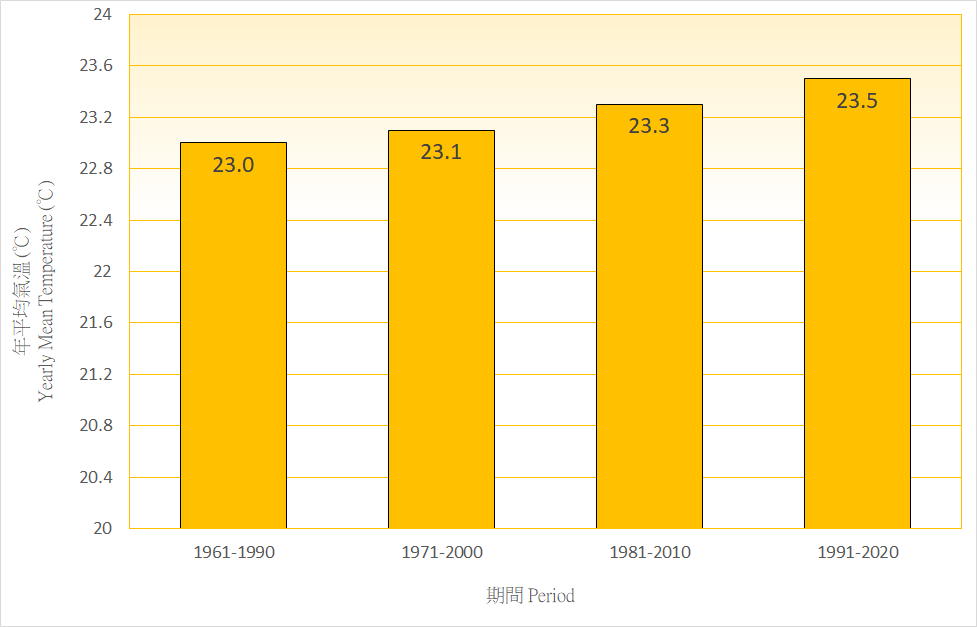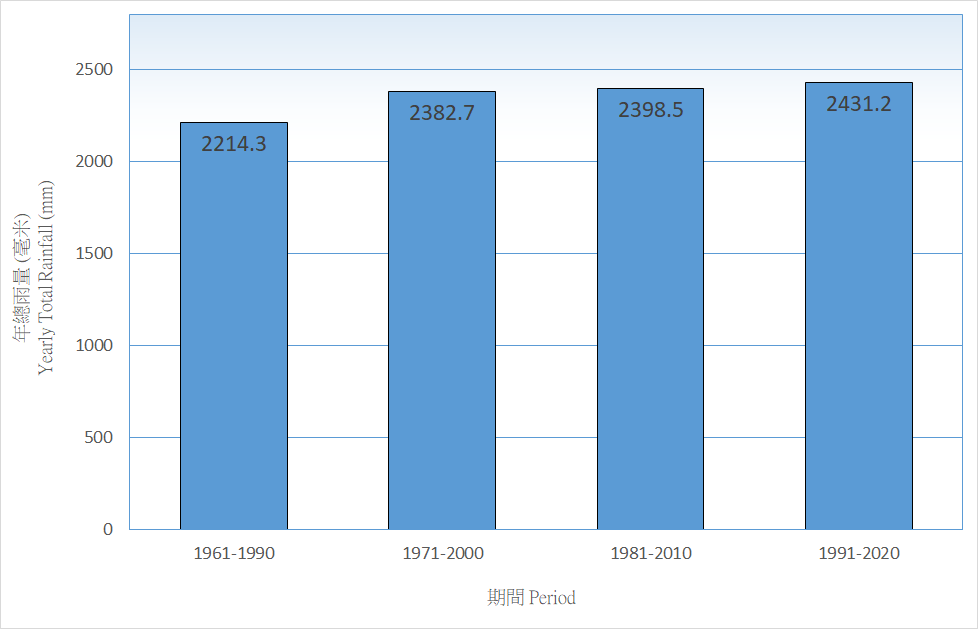What is Climatological Normal?
What is Climatological Normal?
HUI Kin-chung and LAU Ying-hong
February 2021
When reading weather reports or summaries such as the Monthly Weather Summary[1] issued by the Hong Kong Observatory (HKO), you may sometimes see the clauses like "the monthly average temperature was above normal" or "the last year's rainfall was less than normal". So, what is the meaning of "normal" in these statements?
According to the relevant guidelines of the World Meteorological Organization (WMO) in 2017[2], the standard climatological normal is derived from the observations of meteorological data calculated from the average over a 30-year period (with the ending year of "0", such as 1981-2010, 1991-2020) and should be updated every 10 years. The reason for using 30-year data is that a set of climatological normals which is stable over a longer period of time is required as a standard for climate monitoring purposes. The 30-year climatological normals can generally fulfill this requirement. If the averaging period is not long enough, some shorter-term climate phenomena, such as the influence of El Niño or La Niña, will increase the instability of the climatological normals.
Climatological normals have a wide range of uses, providing references on the recent climate for planning, design and applications in various sectors, such as agriculture, energy, engineering, water management, transportation, tourism, environment, and research. Normals are also used as references for climate monitoring and forecasting and serve as benchmarks for determining the anomaly of the current weather condition from the corresponding long-term average.
In 2021, the HKO compiled a new set of 30-year climatological normals for Hong Kong based on the meteorological data measured at the Hong Kong Observatory Headquarters and other key meteorological stations from the period of 1991-2020 to replace the previous 1981-2010 climatological normals. The comparison between the 1991-2020 and 1981-2010 normals reveals that there are statistically significant increases in the annual mean, mean maximum, and mean minimum temperatures in Hong Kong. This is commensurate with the significant long-term warming trend in Hong Kong[3] due to global warming and local urbanization. For annual rainfall and relatively humidity, the changes between these two 30-year periods are not statistically significant.
Members of the public can get access to information on the climatological normals for 1991-2020 and other previous normals at the Observatory's "Climatological Information Webpage".
Comparison of the 1991-2020 and 1981-2010 normals
*Changes are statistically significant
| Meteorological element | 1991-2020 normal |
1981-2010 normal |
Difference ("1991-2020"– "1981-2010") |
|---|---|---|---|
| Annual Mean Temperature(°C) | 23.5 | 23.3 | 0.2* |
| Annual Mean Maximum Temperature(°C) | 26.0 | 25.6 | 0.4* |
| Annual Mean Minimum Temperature(°C) | 21.6 | 21.4 | 0.2* |
| Annual Rainfall (mm) | 2,431.2 | 2,398.5 | 32.7 |
| Annual Mean Relative Humidity (%) | 78 | 78 | 0 |

Fig. 1 1991-2020 and other three previous normals of yearly mean temperature in Hong Kong

Fig. 2 1991-2020 and other three previous normals of yearly total rainfall in Hong Kong